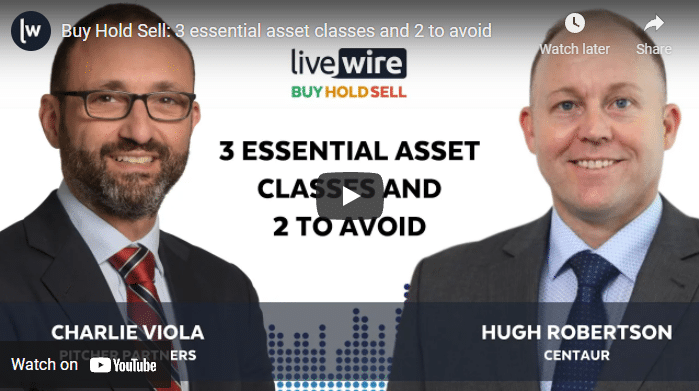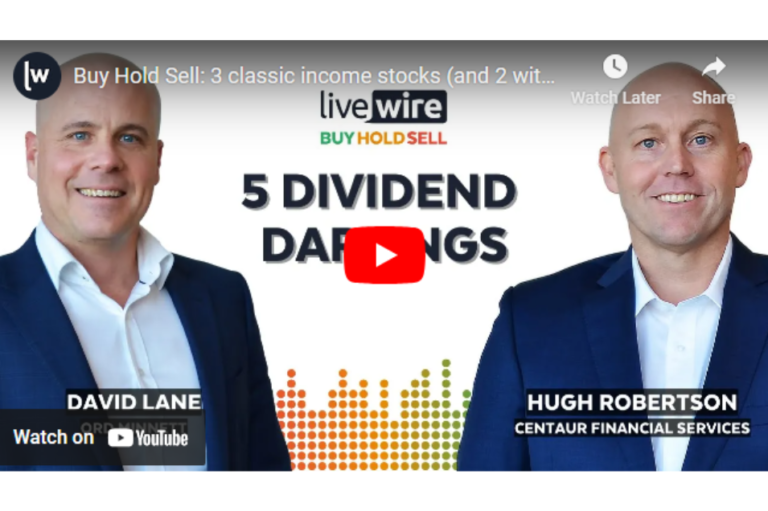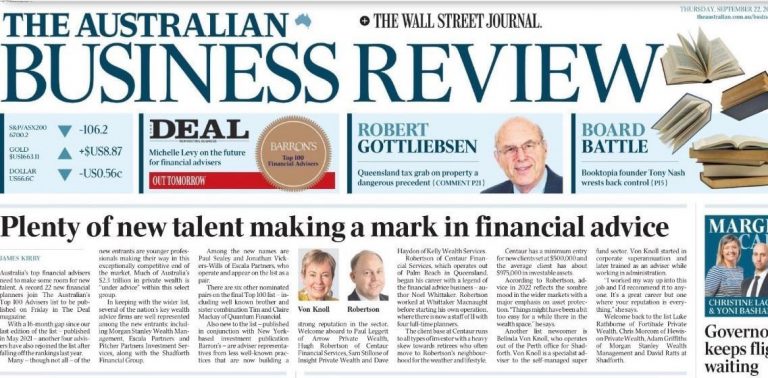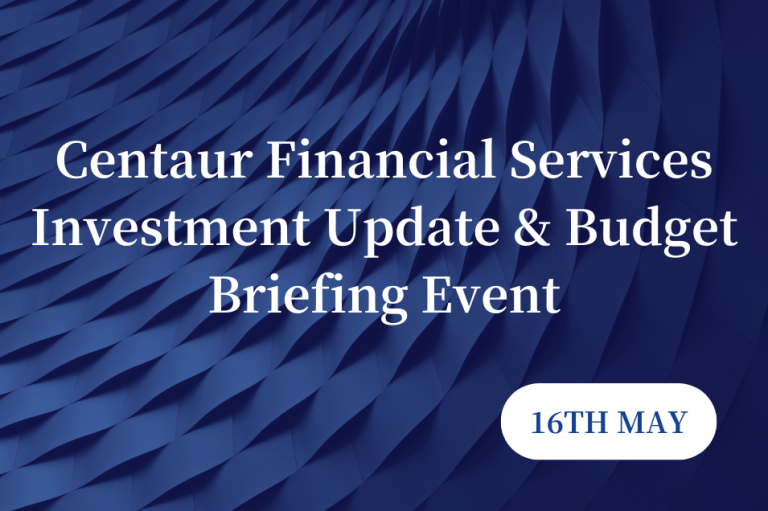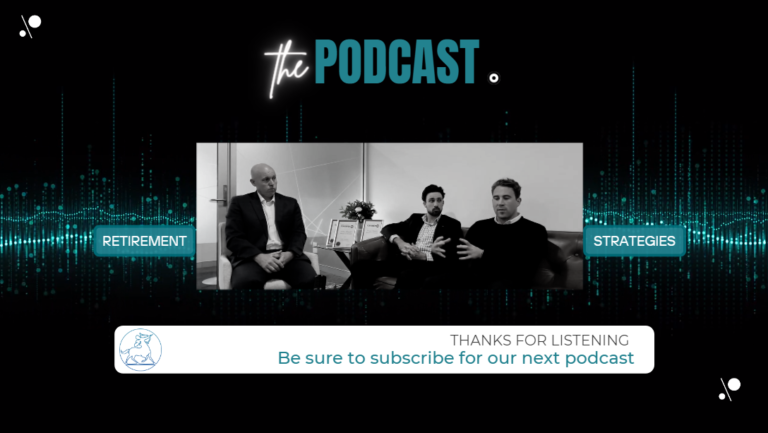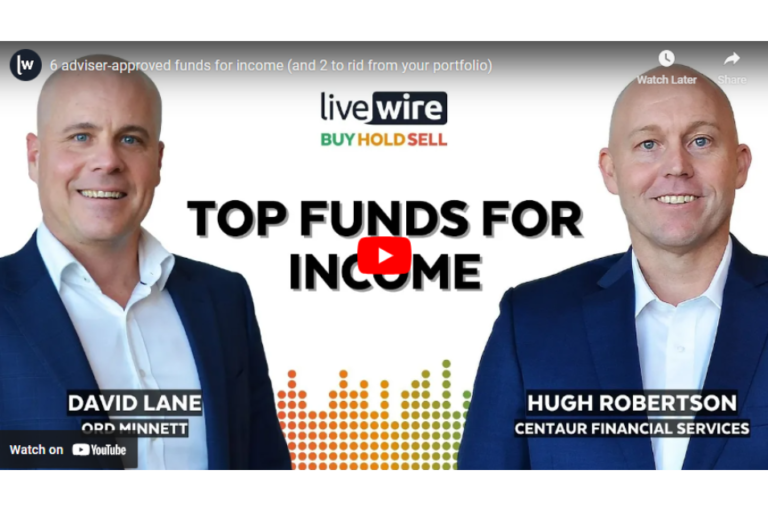Our very own Hugh Robertson joins Livewire’s James Marlay in yet another special Income Series edition of Buy Hold Sell.
In this episode, Livewire drew on the asset allocation expertise of Hugh Robertson from Centaur Financial Services and Charlie Viola from Pitcher Partners.
As stated by Livewire in the release of this edition of Buy Hold Sell – Hugh and Charlie share their views on three asset classes Livewire readers are adding to their portfolios in the year ahead. They also nominate five of their preferred funds and ETFs for gaining exposure to these asset classes.
They also share two areas of investment they are choosing to avoid right now.
Note: This episode was filmed on Wednesday 22nd September 2021. You can watch, listen or read an edited transcript below.
Watch by clicking the below video:
Listen to the audio version by clicking below:
Excerpt Below:
Edited Transcript
James Marlay: Hello, and welcome to Livewire’s Buy Hold Sell. This is our Income Series special, and I’m joined by two special award-winning financial advisers, Hugh Robertson from Centaur and Charlie Viola from Pitcher Partners.
Today, we’re going to be going asset class and fund-specific. Hugh, I’m going to ask you first. We’re going to go through three asset classes to start off with. Australian Equities, is it a buy, a hold, or a sell?
Australian Equities
Hugh Robertson (BUY): Hi, James. For me, it’s a buy. Aussie equities, there’s still room to run. We haven’t had the great catchups that we did over the last 10 years relative to other countries. I think we’re also transitioning a little bit out of banking and resources and we’ve seen some tech come into the market.
For me in particular, it would Bennelong Australian Equities Fund. They’ve been a first quartile manager over a six, one, three, five, 10-year period. Income has been around 5.32%, 10-year average, 15.82% with a 0.95% fee.
So from my mind, it’s really hard to beat that.
James Marlay: Charlie, Aussie equities, are you a buy, hold, or a sell?
Charlie Viola (BUY): We’re a buy here, James. Equities is a major driver of revenue for client portfolios, and we think sometimes keeping things simple is a good way to do it.
Our one is buy STW or the Street Tracks ASX 200. The ticker is STW. It’s 13 basis points of cost. There’s 57 billion or something of FUM in it. The distribution rate is very close to the market. Which I guess as we see the EPS grow overall over time, we’re going to see that revenue production for client portfolios continue to grow. So make it a good cornerstone of your equities portfolio.
Listed Infrastructure
James Marlay: Listed infrastructure, interestingly from the income series survey, this was the asset class that people were most likely to allocate towards in the year ahead, outside of equities.
Charlie, are you a buy, a hold, or a sell on listed infrastructure?
Charlie Viola (BUY): Oh, we love infrastructure, I must say, James. We love it. We love everything about infrastructure. I think the listed managed fund or the ETF that we like in that is Magellan Infrastructure Fund, the ticker code is MICH. Return versus market’s been reasonably good. It’s outperformed the benchmark. The yield is around 4.5%, which kind of hits that target that we’re looking for in client portfolios. It is currency hedged, so you’re losing that sensitivity to FX movements, and just a really high-quality portfolio of quality assets run by a good manager.
James Marlay: Okay, Charlie likes Magellan in listed infrastructure. Hugh, listed infrastructure, is the asset class a buy, a hold, or a sell?
Hugh Robertson (HOLD): I would have it as a hold. I, as well, have Magellan as the one that I would choose. Expert management, very well-run.
Active management in this space I think is very important, especially when you see what’s going to come through in the US with the infrastructure spending, so I do think there’s opportunity. But at this stage, I’m still a hold. I’ll probably wait out another year.
Alternatives
James Marlay: Now, the third asset class is alternatives, Hugh. And while we’re with you, are you a buy, a hold, or a sell on alternatives?
Hugh Robertson (BUY): I’m a buy. In terms of alternatives, I’m going to go Alternative Fixed Income Strategies. I think that there’s the ability to generate a higher return than you can get in cash, and to counteract the risk of inflation, if inflation does start going up.
The investment that I was looking at there was ActiveX Ardea Real Outcome Bond Fund with the code XARO. It’s unconstrained income was 4.12 percent over the last 12 months. Quarterly distributions, low fee, about half a percent. Two percent above inflation is their goal. How the team at Ardea do it is unique in the marketplace, and I think it warrants attention from investors.
James Marlay: Charlie, alternatives, buy, hold, or a sell?
Charlie Viola (BUY): Look, generally, James, we’re a buy on alternatives. But the issue of alternatives is a bit of a spurious one. Alternatives mean different things to different people. You say alternatives to some people and they think you’re going to go off and buy a Guatemalan coal mine or something.
In reality, we look at alternatives as just being another asset class, but we like to think of it at the lower-risk end, so we like syndicated property. We like syndicated debt.
A really simple one that we like to buy for clients to produce income is the Qualitas Real Estate Income Fund, ticker code QRI. A pot of good quality loans that are run by Qualitas, which is a fantastic manager with a huge amount of money under management. There are loans that sit within that book that are of varying degrees up and down the credit stack. It’s paying about, I think, a five and a half percent yield. It trades at Net Asset Value every day. It’s very liquid. A good, easy one for clients just to pick up some good income in their portfolio and have the ability to trade out of it, if they want.
Asset classes to avoid
James Marlay: Now, for people that are at that phase where they’re approaching retirement, is there an asset class that you think is a sell or that they should be reducing exposure to?
Charlie Viola: For me, and again, it’s difficult, I think it depends on the pot size and it depends on how big a client’s portfolio is. I’m a big one for clients not having too much dead cash within their portfolio. The cash should either be sitting there waiting to buy bread, milk, and rice and race cars, or whatever it is that people spend their money on, or it should be waiting to be invested.
So, don’t have too much cash in your portfolio. It’s not going to produce a return for you. It’s not going to generate revenue.
Either take it out and spend it and buy something nice, or get it and get it invested into something that’s going to generate some income for you.
James Marlay: Hugh, Charlie wants to buy race cars for his clients. What are you selling for your clients?
Hugh Robertson: I’m going to hang out with Charlie’s clients. For me, I would be avoiding government bonds. Similar points to Charlie, it’s a really low yield. Typically, it’s a high-duration product and it probably won’t keep pace with inflation.
There’s probably a better opportunity with some of the credit-like opportunities in corporate bonds.
So from our point of view, government bonds, the traditional safe haven that they’re seen as, in the current environment, we don’t really buy that.
James Marlay: Well, that’s a wrap on this special Buy Hold Sell edition as part of our Income Series. Thanks to Hugh and Charlie for being candid and sharing their views today.



